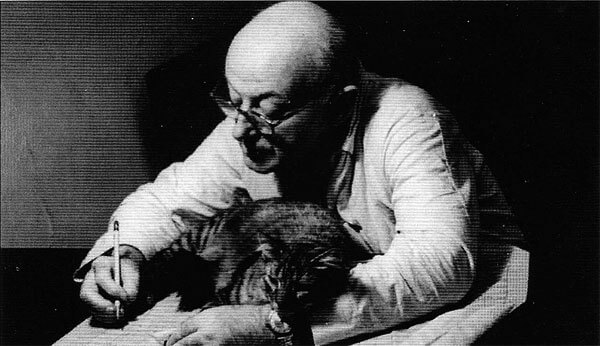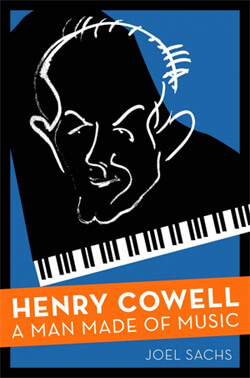
I just finished reading Joel Sachs’ new book, Henry Cowell: A Man Made of Music for the third time. I had previously read it for my own pleasure, and I was delighted to be asked to review it. I’ve read an enormous amount of material on Henry Cowell (although nowhere near as much as Sachs has!), and I must say, this book is by far the best comprehensive biography available. Sachs speaks of the “indigestion” that followed reading every piece of paper associated with Henry Cowell plus background information on San Francisco history, 1920s politics, and so forth. Perhaps it took a while to digest all that information, but the resulting book is well worth the wait. It is a wonderful read, both accessible and informative, full of information and stories so vivid you can’t help but be drawn into Cowell’s life. From Cowell’s humble beginnings at the Menlo Park of the late nineteenth century—then a muddy stretch of nothing worlds from the Silicon Valley suburb it is today—the book chronicles a life so full of adventures it could be a novel.

Henry Cowell
Henry Cowell was much more than the composer of such experimental piano pieces as “The Banshee” and “Tides of Manaunaun.” He is without a doubt one of the single most influential figures in 20th century American music. He wrote a vast catalogue of compositions in a wide variety of styles for practically every possible combination of the usual instruments and some less familiar, including thunder-sticks, shakuhachi, Koto, tap-dancer, and Léon Theremin’s lesser known project, the Rhythmicon—an instrument capable of producing rhythms so complicated no human musician could perform them accurately (the rhythmicon was built to Cowell’s specifications). Cowell created such organizations as the New Music Society (with the associated publications including New Music Quarterly, Orchestra Series, and New Music Recordings), and the Pan-American Association of Composers. He was one of the first Western advocates for musics from around the world, and helped bring such composers as Ruth Crawford Seeger and Charles Ives to the attention of the public. Harry Partch, Conlon Nancarrow, John Cage, and Lou Harrison credit Cowell’s influence in their life’s work. Besides his compositions and texts, Cowell contributed much to western music: he was one of the first composers to use sounds from outside the western chromatic scale, thus planting the seeds of “noise” as music. Both Berg and Bartok requested his permission to use tone-clusters in their work.
In addition to his influence on American music, Cowell traveled the world and brought his influence with him. Still today the Cowell drumming prize is awarded every year in India. Cowell was one of the composers asked to write a Singaporean National Anthem (although his was not selected in the end). He was the first American composer/performer to be invited to tour soviet Russia – in May of 1929 he played concerts in Moscow and Leningrad. His music was performed, broadcast, or published in Europe, Asia, the Middle East, North and South America.
Even Cowell’s tragic years in San Quentin couldn’t prevent him from working on his projects: he wrote a book, several articles, and countless arrangements, small pieces, and lectures while serving time for what his prosecutor felt was a trivial morals charge. Speaking of which: now that papers and other materials have been made available, Sachs has been able to clear up much of the stir around Cowell’s guilty plea and subsequent imprisonment. The book goes into great detail about the legal ins and outs of the whole affair, but suffice to say there would have been no crime nor trial in today’s much less puritanical world.

Out of all the material on Cowell I’ve read (an extensive and still growing list), Joel Sachs’ book is the first truly comprehensive biography I’ve encountered. There are other books that cover bits and pieces of Cowell’s life quite well, in fact Sachs doesn’t cover the New Music Society years in any great depth in his work but instead points the reader toward Rita Mead’s excellent book on the topic, Henry Cowell’s New Music (1925-1936). There is enough information packed into this book that I think I’ll be reading it at least another 3 times (and probably learning more and enjoying it all over again each time through!) It reads very smoothly, and is filled with just the right amount of humor to balance out what was at times a very difficult life. While one could sit down and read any given chapter/section, the book read from cover to cover flows together into a very complete biography of a man who is—in my opinion—one of music history’s most unjustly neglected figures.
—
Kelsey Walsh is a pianist and currently resides in San Francisco. Follow her on twitter: @kwpianist.
